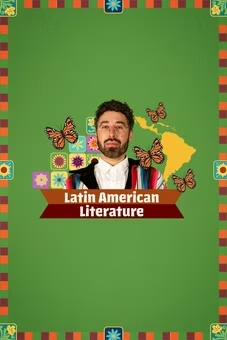
Walking Sticks Stop, Drop and Clone to Survive
Season 7 Episode 6 | 3m 50sVideo has Audio Description, Closed Captions
Indian walking sticks are more than just twig impersonators.
Indian walking sticks are more than just twig impersonators. They even clone themselves into a surprising variety of colors to stay hidden in plain sight from predators.
See all videos with Audio DescriptionADProblems playing video? | Closed Captioning Feedback
Problems playing video? | Closed Captioning Feedback

Walking Sticks Stop, Drop and Clone to Survive
Season 7 Episode 6 | 3m 50sVideo has Audio Description, Closed Captions
Indian walking sticks are more than just twig impersonators. They even clone themselves into a surprising variety of colors to stay hidden in plain sight from predators.
See all videos with Audio DescriptionADProblems playing video? | Closed Captioning Feedback
How to Watch Deep Look
Deep Look is available to stream on pbs.org and the free PBS App, available on iPhone, Apple TV, Android TV, Android smartphones, Amazon Fire TV, Amazon Fire Tablet, Roku, Samsung Smart TV, and Vizio.
Providing Support for PBS.org
Learn Moreabout PBS online sponsorship[MUSIC PLAYING] NARRATOR: This mosquito is quite the looker with her elegant legs and flashy white markings.
But she's dangerous.
To make her incredibly resilient eggs, this Aedes aegypti mosquito needs human blood.
And her bite could give you an agonizing case of dengue fever or transmit the Zika virus, which can endanger babies in the womb.
She feeds during the day.
She really likes ankles.
While other mosquitoes live in the forest, this one thrives where humans are.
Aedes aegypti females lay their eggs wherever water accumulates around our homes.
Her antennae can guide her to even the tiniest pockets of water.
Many mosquitoes lay their eggs directly on the water's surface, all at once in a clump.
But our Aedes aegypti hedges her bets.
She lays an egg here, an egg there, carefully gluing each one above the waterline.
The eggs need to stay moist for the first three days to develop.
At the same time, they darken and harden.
Their outside layer, the chorion, turns into a thick, protective shell.
The eggs end up looking a lot like dirt.
And they're amazingly hardy.
Unlike many mosquitoes' eggs, which die out without water, these can stay viable for up to half a year.
It's an incredible way to survive a drought and to spread around the world.
When the eggs meet water again, like when it rains or someone fills that pot, tiny larvae hatch.
A special waxy layer kept them from drying out inside.
Before you know it, you have a larvae party.
That's why the best way to keep dengue mosquitoes from making a home in yours is to empty standing water every week.
If not, the larvae will flourish, breathing through their siphons, diving for food.
This is one party you want to break up as soon as you can.
Hi, it's Laura.
At Deep Look, we are obsessed with parasites.
Here's a playlist of our favorite blood-sucking, stinging, zombifying episodes, including our most popular video so far: How Mosquitoes Use Six Needles To Suck Your Blood.
Thanks for watching.


- Science and Nature

A documentary series capturing the resilient work of female land stewards across the United States.












Support for PBS provided by:

